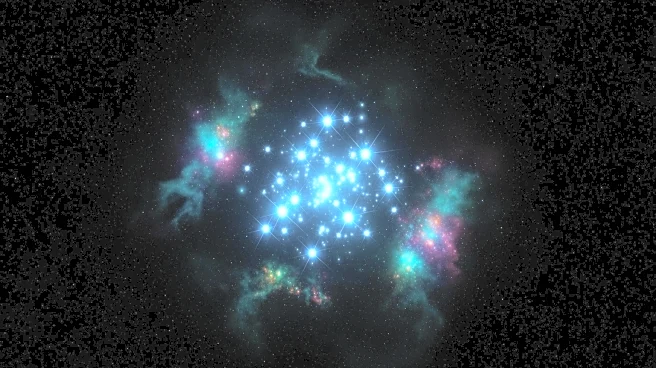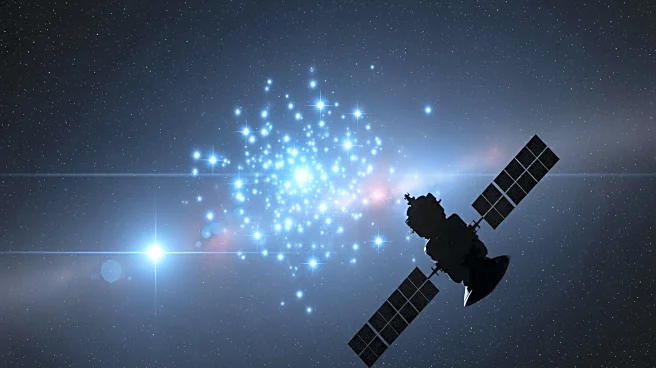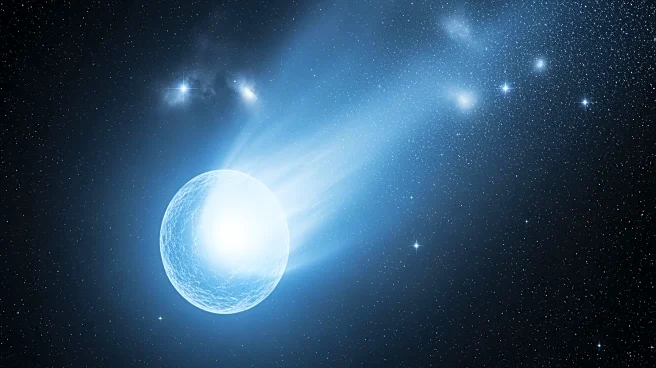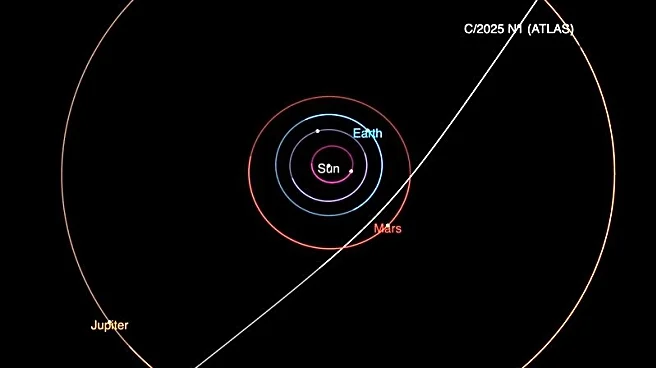What's Happening?
NASA's High Angular Resolution X-ray Imager Science Analysis Group (Hi-ReX SAG) has made a significant discovery using new Chandra data of the Small Magellanic Cloud (SMC), a dwarf galaxy near the Milky
Way. For the first time, X-ray emissions from young stars with masses similar to our Sun have been detected outside our galaxy. The SMC, visible to the unaided eye from the Southern Hemisphere, offers a unique opportunity to study star formation and evolution. The Chandra data, combined with optical data from the Hubble Space Telescope and infrared data from the Spitzer Space Telescope, revealed extended X-ray emission from young, low-mass stars in the NGC 602a cluster.
Why It's Important?
This discovery is crucial for understanding star formation and evolution in galaxies beyond the Milky Way. The detection of X-ray emissions from young stars provides insights into the early stages of stellar development, which are difficult to observe in more distant galaxies. The findings contribute to the broader field of astrophysics by offering a new perspective on the lifecycle of stars and the conditions that lead to their formation. This research enhances our knowledge of galactic dynamics and the processes that govern the universe's structure.
What's Next?
The Hi-ReX SAG will continue to analyze the data from the SMC to uncover more details about star formation and evolution. Future observations may focus on identifying other regions within the SMC that exhibit similar characteristics. The collaboration between Chandra, Hubble, and Spitzer telescopes will likely expand to study other nearby galaxies, providing a comprehensive understanding of stellar phenomena. These efforts may lead to new theories about the formation of stars and the role of X-ray emissions in their development.
Beyond the Headlines
The detection of X-ray emissions from young stars in the SMC challenges existing models of star formation and evolution. It suggests that similar processes may occur in other dwarf galaxies, prompting a reevaluation of how stars develop in different environments. This discovery also highlights the importance of multi-wavelength observations in astrophysics, demonstrating how combining data from various telescopes can lead to groundbreaking findings. The research may inspire new technological advancements in telescope design and data analysis methods.












